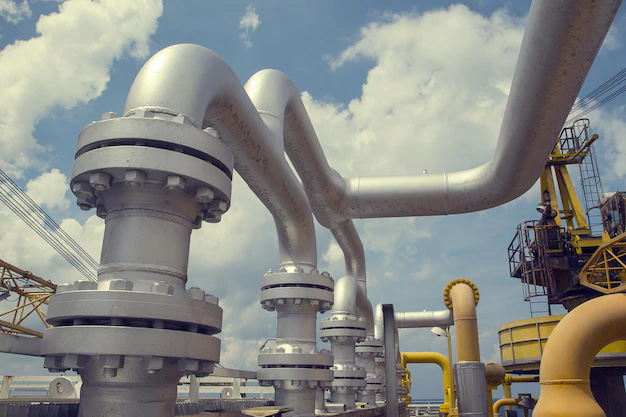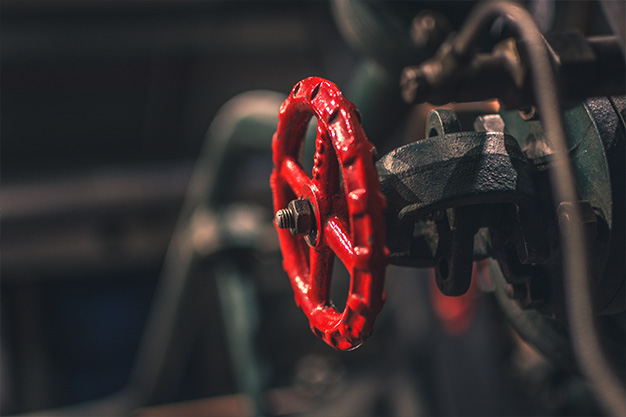Principle of operation and role of pressure reducing valves
- Categories:Industry News
- Author:
- Origin:
- Time of issue:2022-03-07 14:33
- Views:
Principle of operation and role of pressure reducing valves
- Categories:Industry News
- Author:
- Origin:
- Time of issue:2022-03-07 14:33
- Views:
A, What is a pressure reducing valve
A pressure reducing valve is a valve that, through adjustment, reduces the inlet pressure to a certain required outlet pressure and relies on the energy of the medium itself to keep the outlet pressure stable automatically. From the viewpoint of fluid mechanics, a pressure reducing valve is a throttling element whose local resistance can be changed, i.e. by changing the throttling area, the flow rate and the kinetic energy of the fluid are changed, resulting in different pressure losses, thus achieving the purpose of pressure reduction. Then rely on the control and adjustment system adjustment, so that the fluctuation of the pressure after the valve and the spring force balance, so that the pressure after the valve within a certain error range to maintain a constant.
B, the working principle of pressure reducing valve
When water is used behind the inlet pressure reducing valve, the water passes through the spool to produce pressure loss. The size of the pressure loss is determined by the size of the spool opening, and the size of the spool opening is determined by the spring force, so by adjusting the spring at the top of the inlet pressure reducing valve to control the spool opening, thus controlling the pressure loss, the required pressure behind the valve can be obtained.
When no one is using water after the inlet pressure reducing valve, the pressure after the valve increases, then the pressure after the valve plus the pressure before the valve is greater than the spring force will put the spool upwards (the pressure reducing valve is in a normally open state, then the fluid before the valve and the fluid after the valve is completely separated, at this time the pressure reducing valve outlet pressure is greater than the set value, but due to inertia, the upward movement of the diaphragm will not stop at once, will continue to move upwards a little, equivalent to the outlet cavity at the valve becomes more than the set value. The pressure of the internal liquid drops until it is exactly equal to the set pressure value of the outlet of the pressure reducing valve.
C, pressure reducing valve classification
1、Action type pressure reducing valve
The simplest pressure reducing valve, the direct acting pressure reducing valve, has a flat diaphragm or bellows. Because the pressure reducing valve is a freestanding structure, there is no need to install an external sensing line downstream. It is the smallest and most economical of the three types of pressure reducing valves and is designed for low to medium flow rates. The accuracy of direct acting pressure reducing valves is typically +/- 10% of the downstream set point.
2. Diaphragm type pressure reducing valves
In this type of pressure reducing valve, a double diaphragm replaces the piston in an internally guided pressure reducing valve. This increased diaphragm area of the pressure reducing valve allows a larger main valve to be opened and has a larger capacity than an internally guided piston pressure reducing valve for the same pipe size. In addition, the pressure reducing valve diaphragm is more sensitive to pressure changes and can be accurate to +/-1%. The higher accuracy is due to the positioning of the downstream sensing line (external to the valve), where there is less gas or liquid turbulence. The pressure reducing valve is very flexible and can be used with different types of pressure reducing valve guides (e.g. pressure valve, temperature valve, air loading valve, solenoid valve or several valves at the same time).
3. Piston type pressure reducing valves
This type of pressure reducing valve combines two types of valve - pilot valve and main valve - in one. The design of the pilot valve is similar to that of the direct acting pressure reducing valve. The exhaust pressure from the pilot valve acts on the piston to open the main valve. If the main valve is too large to open directly, this design uses the inlet pressure to open the main valve. This type of pressure reducing valve, therefore, has a higher capacity and accuracy (+/-5%) for the same pipe size than a direct acting pressure reducing valve. In common with direct acting pressure reducing valves, the pressure reducing valve senses pressure internally and does not require an externally installed sensing line.
D. The role of pressure reducing valves
A pressure reducing valve is a special device that automatically reduces the working pressure of a pipeline. The role of a pressure reducing valve is to automatically reduce the higher gas (vapour) pressure to the required low gas (vapour) pressure after a given pressure reduction range; when the gas (vapour) pressure on the high pressure side fluctuates, it can play an automatic regulating role to make the gas (vapour) pressure on the low pressure side stable. Pressure reducing valves are widely used in high-rise buildings, areas with high water pressure in the urban water supply network, mines and other occasions to ensure that each water point in the water supply system receives the appropriate service water pressure and flow.
E. Models of pressure reducing valves
The models of pressure reducing valves are the following representative models.
0232 piston type pressure reducing valve, nickel-plated brass, PN16, adjustable outlet pressure from 1 to 5.5 bar, the most compact and cost-effective of the imported pressure reducing valves, which can be connected to a pressure gauge and is widely used for pressure reduction in branch pipes in high-rise buildings.
0234 Piston type pressure reducing valve, brass, with double live-joint, easy to install, PN25, adjustable outlet pressure 0.5-5.5 bar, can be connected to a pressure gauge, widely used for pressure reduction in branch and trunk pipelines in high-rise buildings.
0226 diaphragm type pressure reducing valve, brass, PN25, adjustable outlet pressure from 1.5 to 7 bar, can be connected to a pressure gauge, widely used for pressure reduction in branch and trunk pipelines in high-rise buildings.
0204 diaphragm type pressure reducing valve, brass, PN40, adjustable outlet pressure 1-7 bar, can be connected to a pressure gauge, widely used for pressure reduction in branch and trunk pipelines in high-rise buildings.
0204 diaphragm type ultra low pressure reducing valve, brass, PN10, adjustable outlet pressure 0-1 bar, can be connected to a pressure gauge, widely used in precision equipment, breeding rooms, laboratories.
Products & Services
Contact Us
TEL:+86 512 67420760
E-mail: sales@valveman-service.com
ADD:108-C,No.32 Dongfu Road,SIP,Suzhou,China
Follow Us



